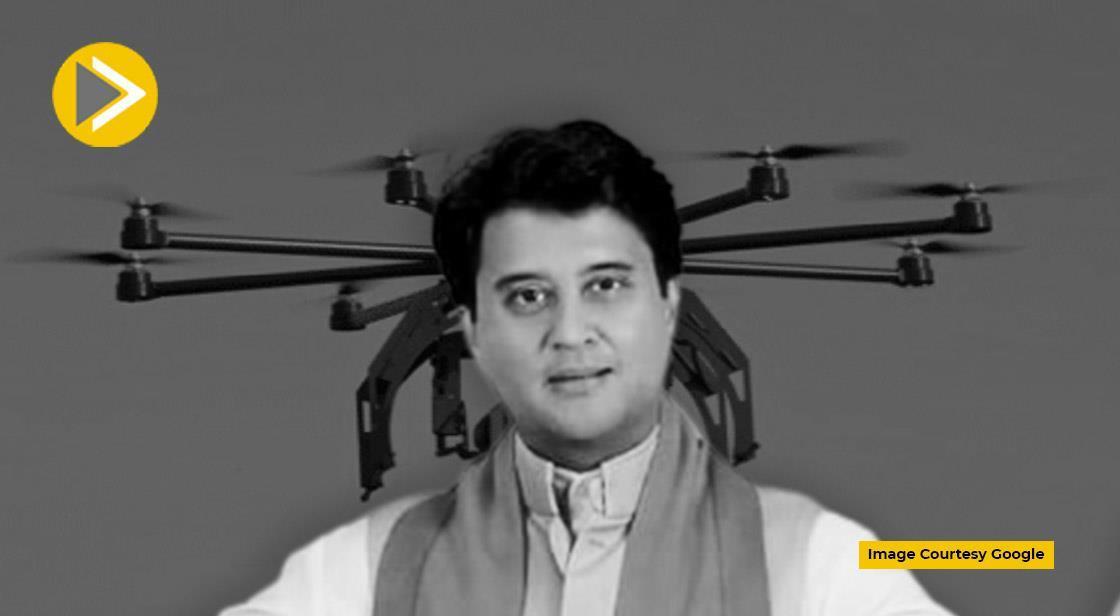Jyotiraditya Scindia Launches SATCOM Summit at IMC 2025, Outlines India’s Satellite Ambitions

News Synopsis
Union Communications Minister Jyotiraditya M. Scindia on Wednesday formally inaugurated the SATCOM Summit, themed “Space Networks for Universal Connectivity”, at the India Mobile Congress 2025 (IMC 2025). He described the launch as “the threshold of a revolution — a revolution born in the sky, carried by satellites, but destined to transform lives on the ground.”
The event drew prominent figures from India’s telecom and space sectors: Jitendra Singh (Minister of State, Space), V. Narayanan (Chairman, ISRO and Department of Space), and Pawan Goenka (Chairman, IN-SPACe) among them.
India’s Digital Connectivity Push & SATCOM as a Pillar
Union Communications Minister Jyotiraditya M. Scindia emphasized India’s impressive rate of digital growth — connecting 99.9 % of the population using 4.8 lakh 5G towers in just 20 months — the fastest rollout globally. He asserted that satellite communication should no longer be viewed as a luxury but as a right: “SATCOM is no longer a luxury; it is a right – a form of justice in the digital era.” Through this, he foresees SATCOM enabling accessibility for farmers, fishers, doctors, and students in areas beyond the reach of terrestrial networks.
Under programmes like the Universal Service Obligation Fund and Digital Bharat Nidhi, the government has targeted connectivity for 38,260 remote villages across difficult terrains, supported by an investment of ₹40,000 crore. To date, roughly 29,000 villages (≈ 75 %) have already been connected.
Policy Reforms & Licensing Moves
Scindia announced several major reforms intended to position India as a leader in satellite communications:
-
Administrative allocation of satellite spectrum following best international practices
-
Granting GMPCS licences to OneWeb and Jio Satellite Communications
-
Issuance of a Letter of Intent to Starlink, setting the stage for a vibrant SATCOM ecosystem
He also proposed establishing a ₹900 crore National SATCOM Monitoring Facility to protect spectrum assets and bolster the security of satellite gateways.
Market Potential & Strategic Ambitions
The Indian SATCOM sector is poised for enormous growth. Scindia cited the current market valuation of USD 4.3 billion (2024), with projections of expanding to USD 14.8 billion by 2033. He urged India not just to be a user of satellite services but to evolve into a hub, exporter, and trusted global partner.
Reflecting on India’s journey in space, Scindia referenced missions from Aryabhata (1975) to Chandrayaan-3, Aditya-L1, NISAR, and Gaganyaan, underscoring how India has moved from being a follower to a trendsetter in space technology.
He called for a unified SATCOM programme that brings together government, industry, startups, academia, and international collaborators. “In the great symphony of progress, India will not be a silent listener. India will be the conductor, leading the orchestra of global innovation — composing the melody of opportunity,” he declared.
Summit & Event Context
Organized jointly by the Department of Telecommunications (DoT) and Cellular Operators Association of India (COAI), IMC 2025 runs from October 8 to 11 under the theme “Innovate to Transform.” The summit will showcase over 1,000+ use cases spanning 5G, AI, semiconductors, IoT, Satcom, and more.
At the summit, Jitendra Singh highlighted how satellite communication will serve as the backbone of India’s digital infrastructure, especially in remote regions where terrestrial networks struggle.
The Broader SATCOM Landscape
-
According to Grand View Research, India’s satellite communication market generated USD 3,509.6 million (≈ USD 3.51 billion) in 2024 and is projected to reach USD 5,942.7 million by 2030 (CAGR ~9.4 %)
-
IMARC Group estimates India’s SATCOM market in 2024 at USD 3.0 billion, growing to USD 5.85 billion by 2033 at a CAGR of 7.70 %
-
KPMG reports that India’s SATCOM sector (currently ~USD 2.3 billion) could hit USD 20 billion by 2028
These figures align with Scindia’s vision of a fast-scaling, high-value ecosystem.
Conclusion
The inauguration of the SATCOM Summit at IMC 2025 by Minister Scindia signals India’s bold leap toward global prominence in satellite communication. With wide-reaching reforms, licensing decisions, infrastructure plans, and a clear ambition to lead rather than follow, India is charting a path to transform connectivity across its terrain — and well beyond national borders.
If India succeeds in executing these plans — from securing spectrum, integrating terrestrial and non-terrestrial networks, to scaling SATCOM services globally — it could redefine what inclusive, resilient digital infrastructure looks like in the 21st century.
You May Like









